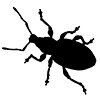This is a project I have been working on for a while now. The ides was to create a set of videos showing British wildlife species, whereby the camera rotates about the subject capturing them in high detail.
I think it's true of many wildlife species, even common ones, that people often don’t have a clear idea of what they look like. For example I have often encountered people that struggle to tell the difference between a common frog and toad. On close inspection these two species look markedly different however most people don’t get to see them close up. Growing up in a town it was rare to toads at all. Even with traditional wildlife filming it's not always possible to get a true impression of an animal.
I want to create a series of videos that are the next best thing to viewing them in person.
In order to achieve this I have created a 360 rotating filming table. This device has been and continues to go through a number of design improvements but at the moment I’m fairly happy with the results. The basic idea is to have an arm that holds the camera and background that rotates around a centre point in which the subject sits. This is not an original idea, I have seen several different versions of it online (although never with wild subjects). The benefit to this design over a simple turntable is that the subject itself does not move. This creates less disturbance allowing them to relax in front of the camera.
The challenge with this setup has been the lighting. The aim is to get flat even lighting that doesn’t alter as the camera is moving. I was also careful to match the lighting on the centre table as the background in order to create the impression of one seamless platform that the subject sits on. This is all in an effort to remove anything that might distract from from the subject itself.
The second great challenge has been getting the subject to remain stationary in the centre of the platform. When the subject is even slightly off centre, it results in an unpleasant rotation, that sends the subject out of focus.
Video showing the 360 spin table in use.
As a test I took some of the 360 spin footage and extracted from it the individual frames. These frames I then processed through Polycam, the photogrammetry app. The resulting 3D model you can see below. Considering it was was only one elevation, I think it did a pretty good job at capturing the subject.
The underlying mesh from this 3D model was pretty crude and lacked many of the finer details of the toads but I was able to sculpt these back in by hand. The resulting model I then 3D printed, which you can see below.
3D model created using the Polycam app, from photos extracted from the 360 spin footage.
A 3D print toad


